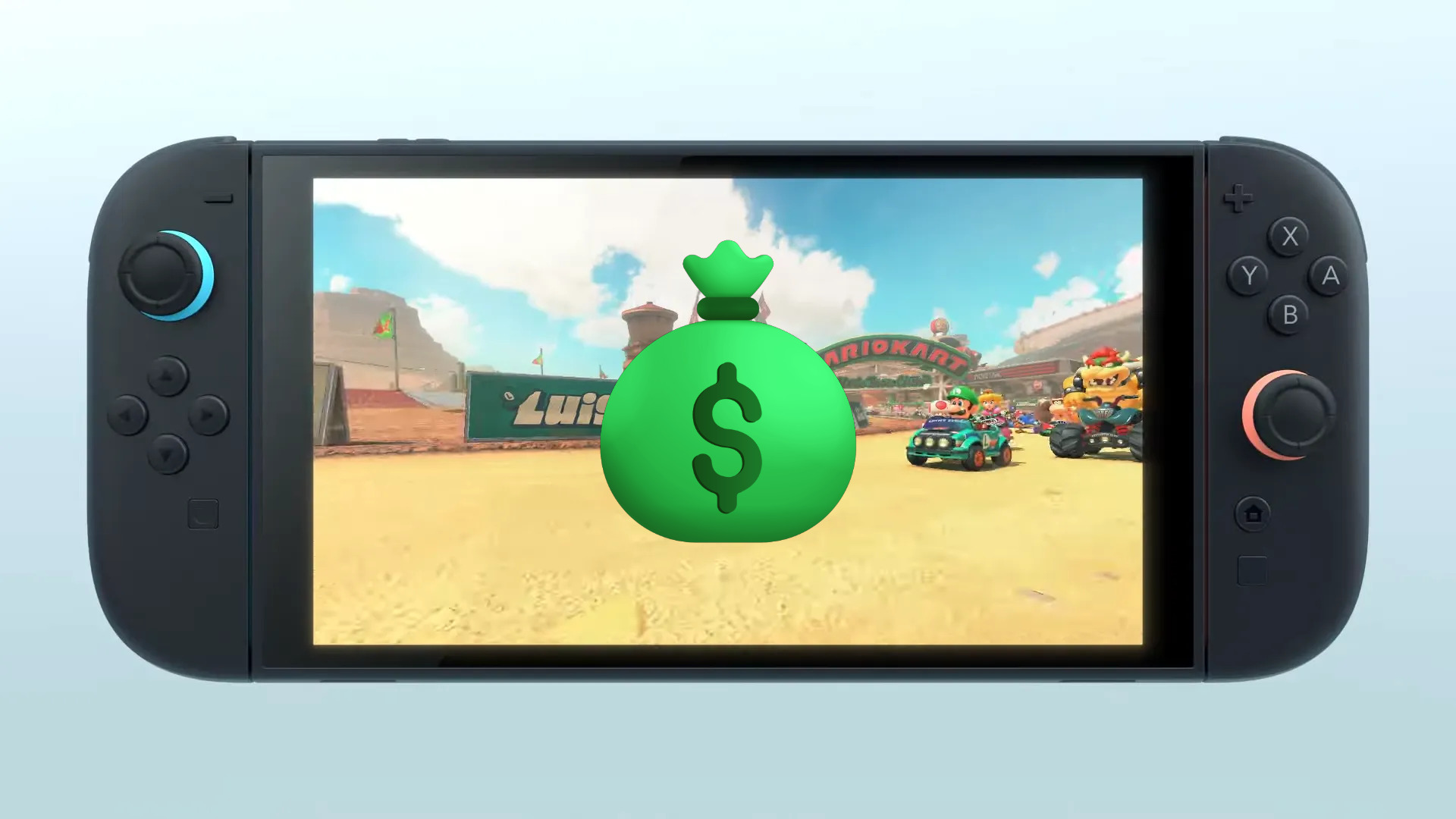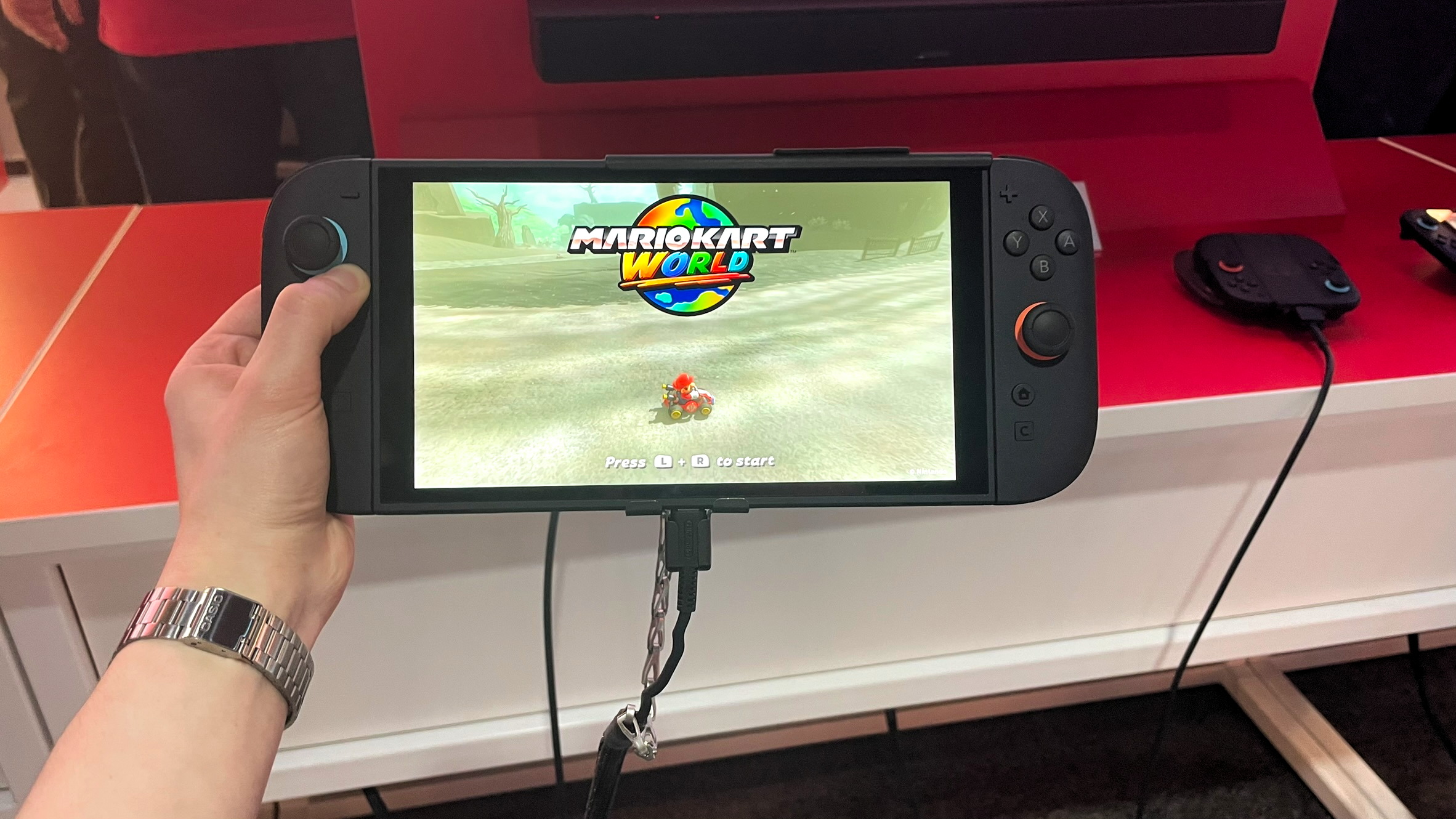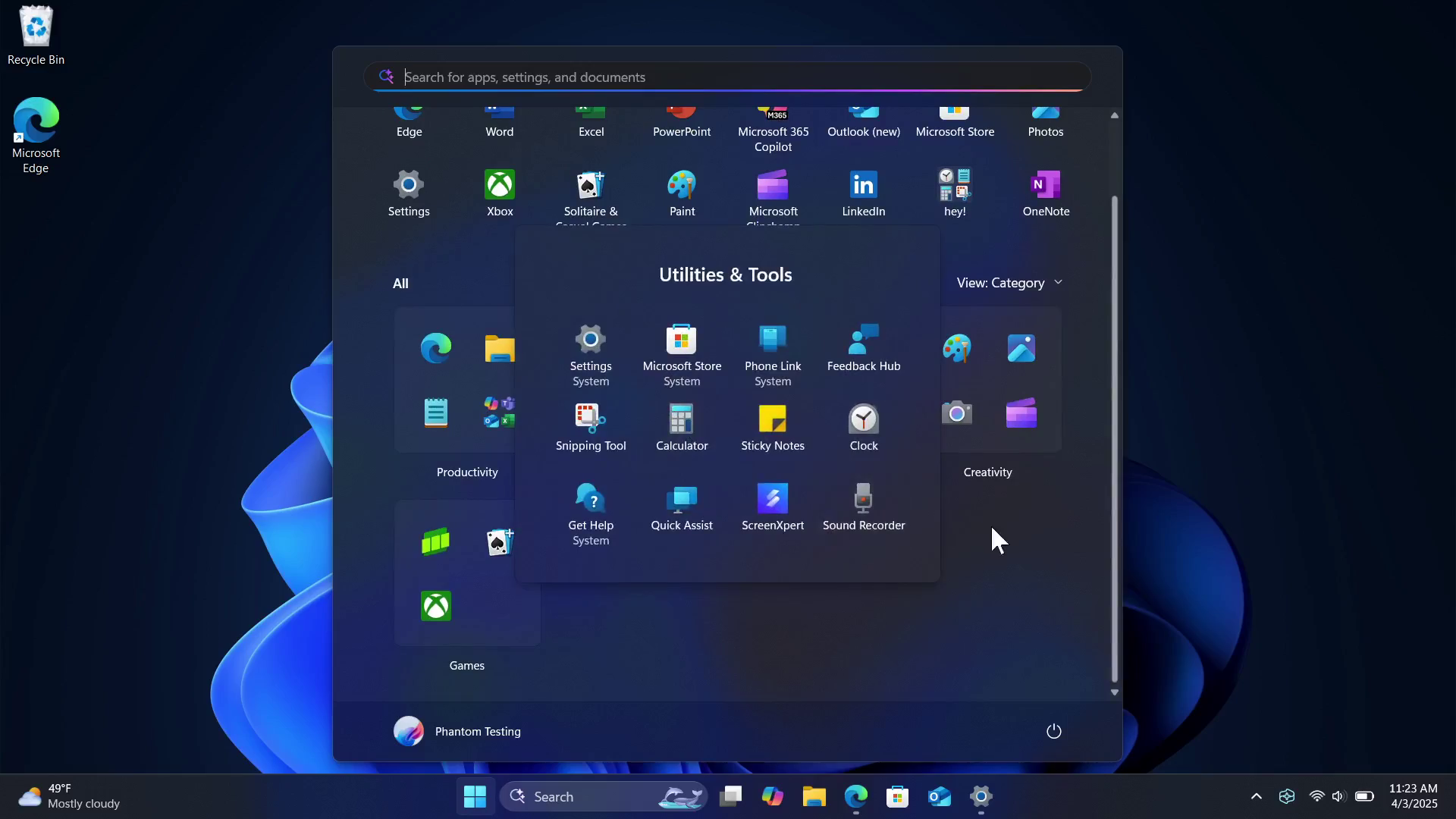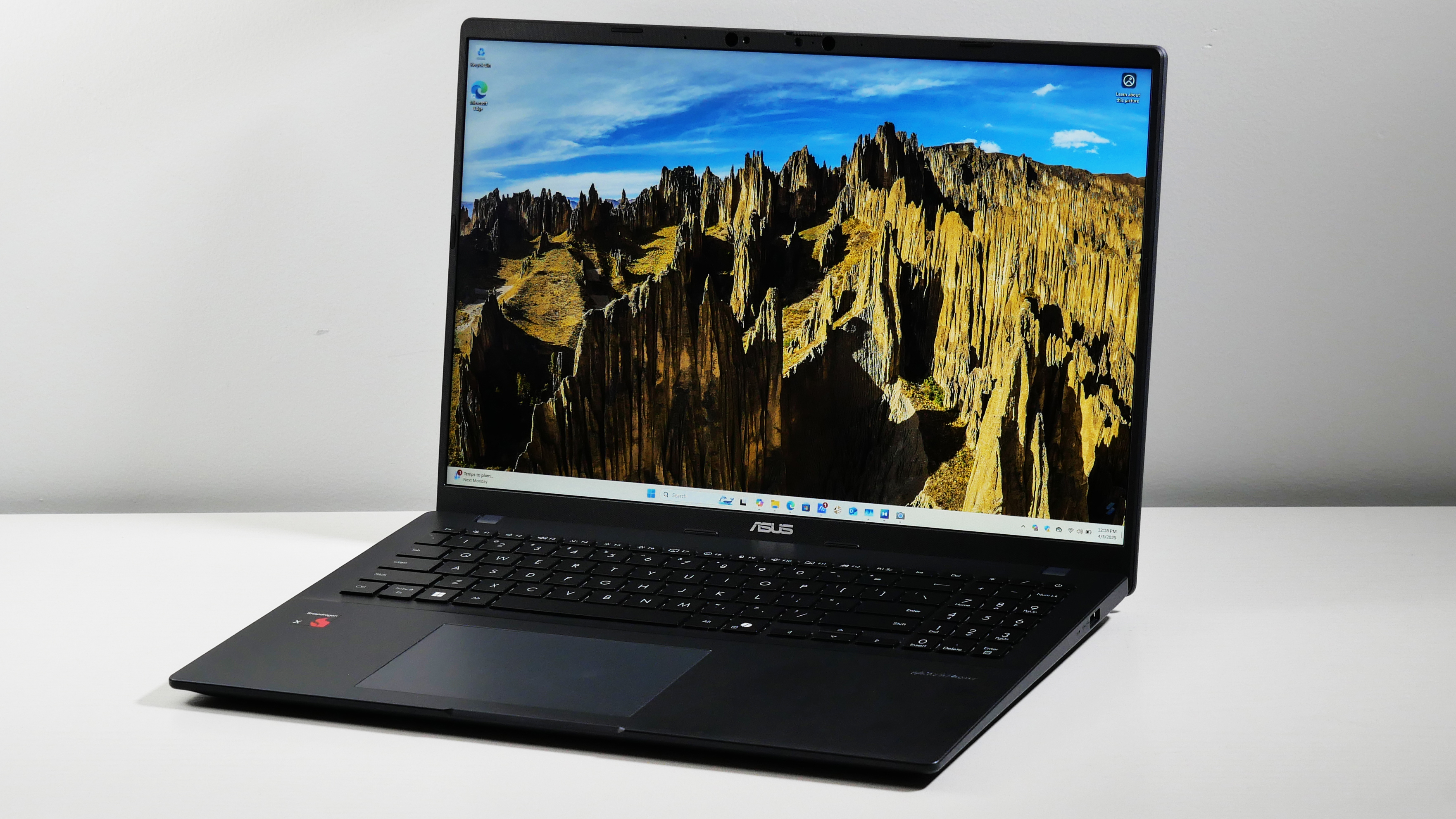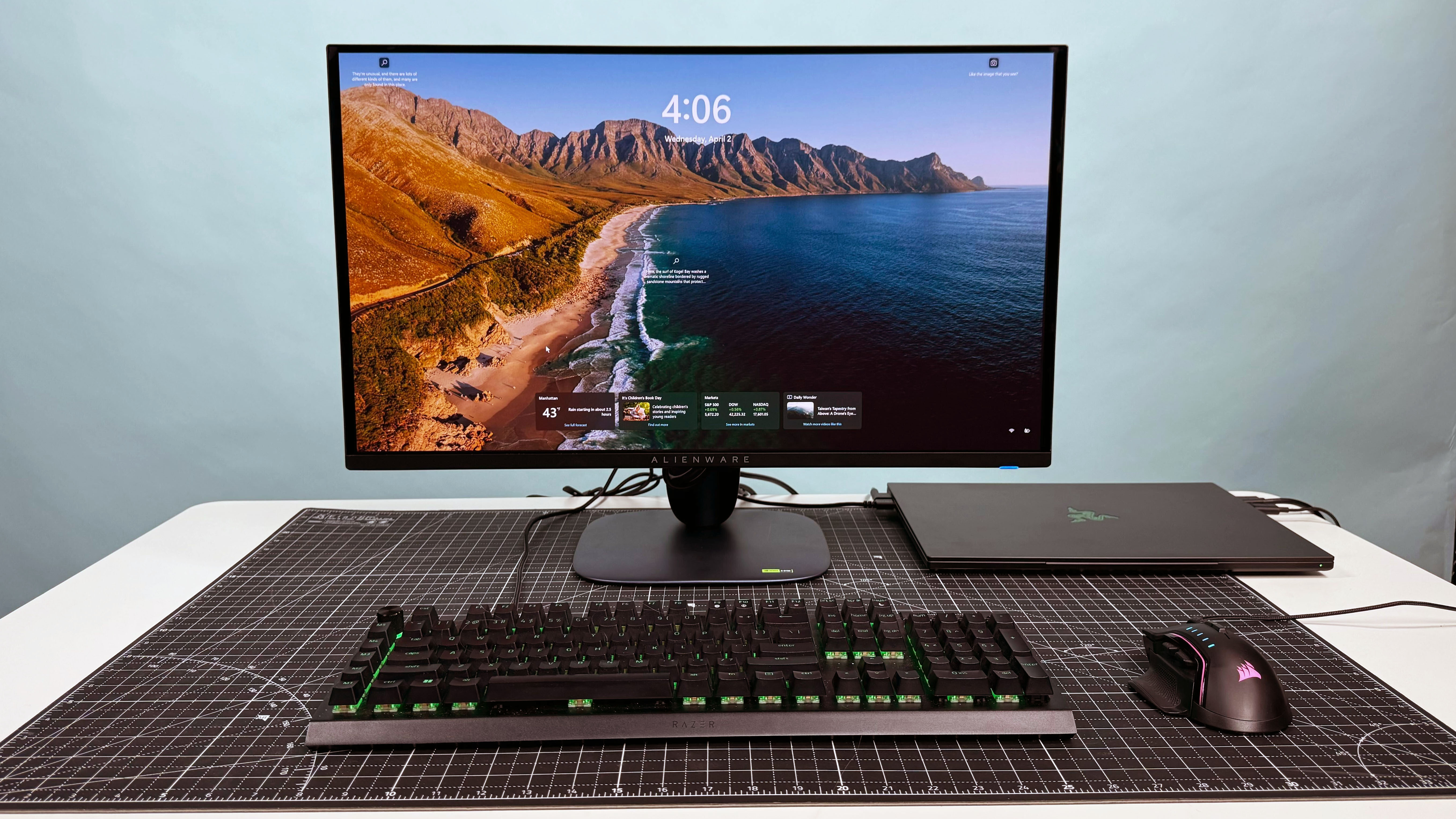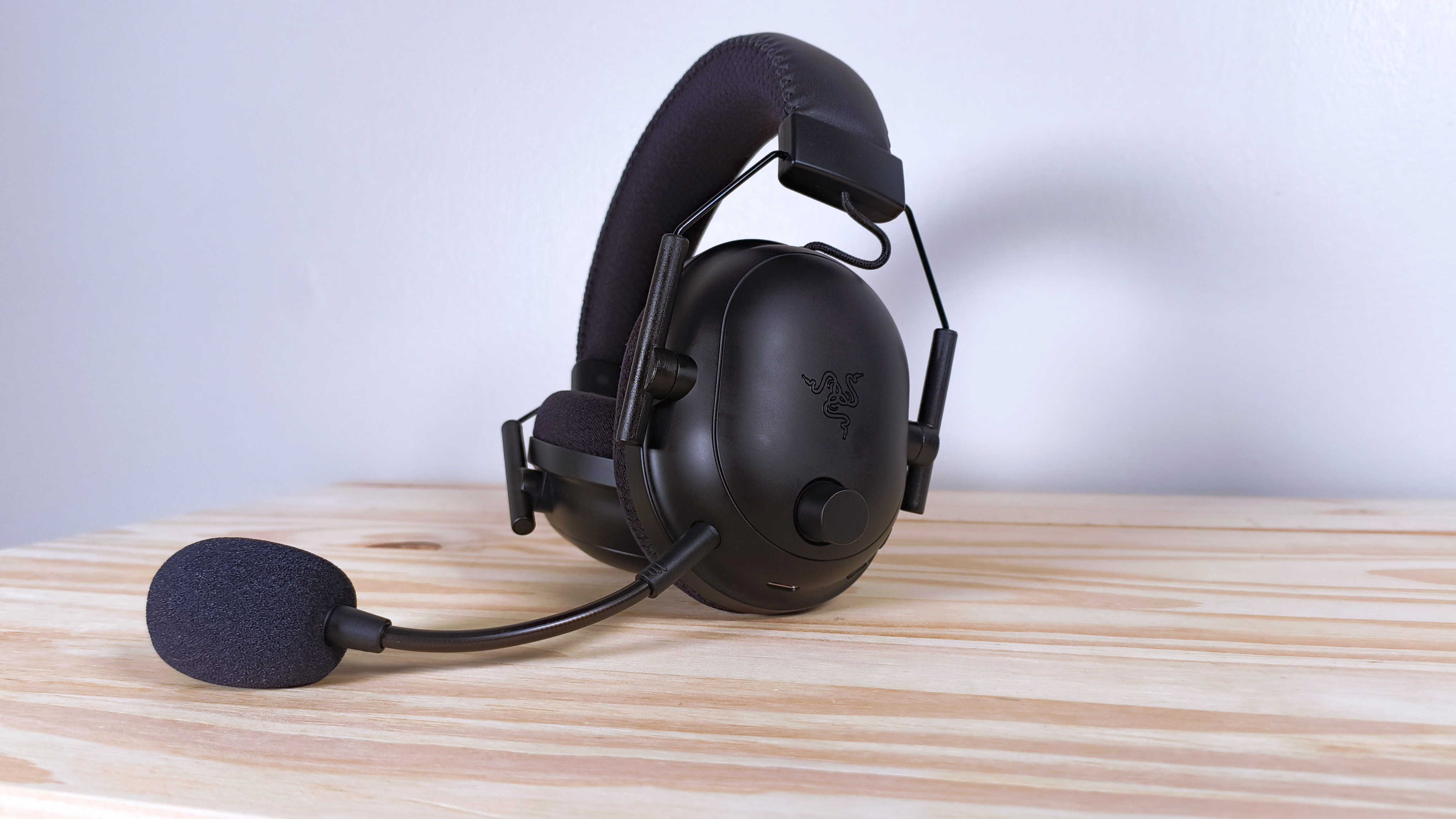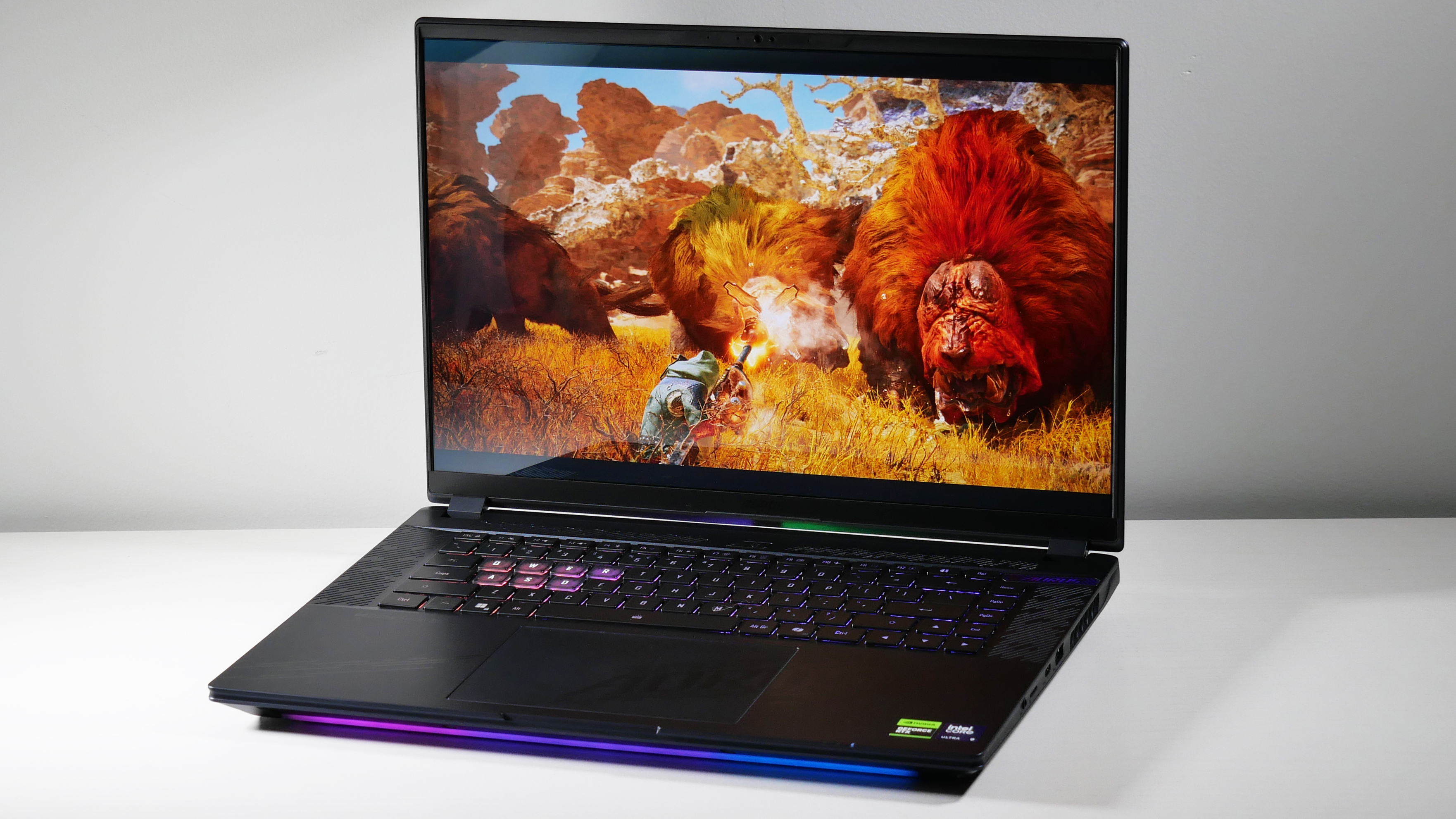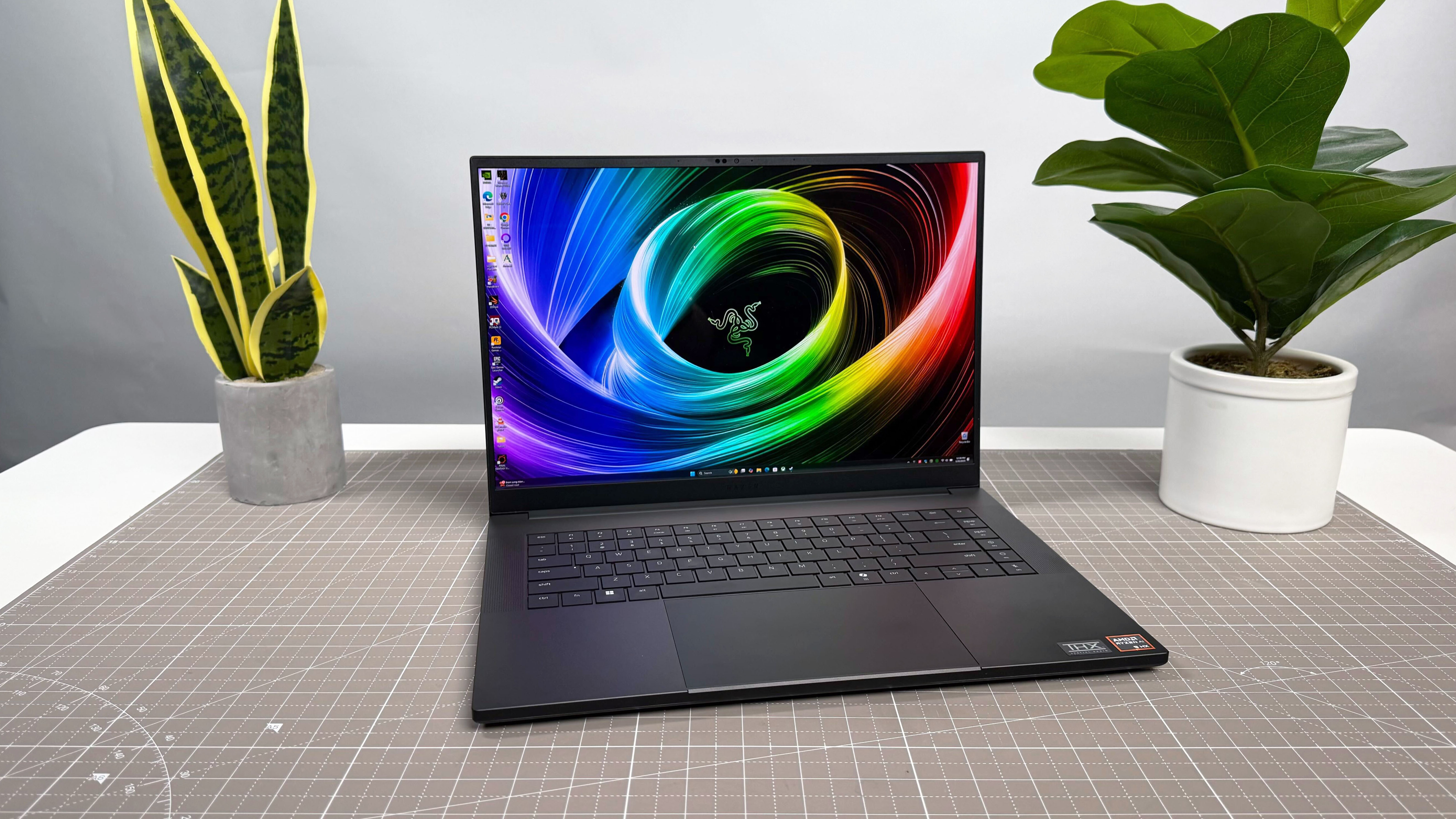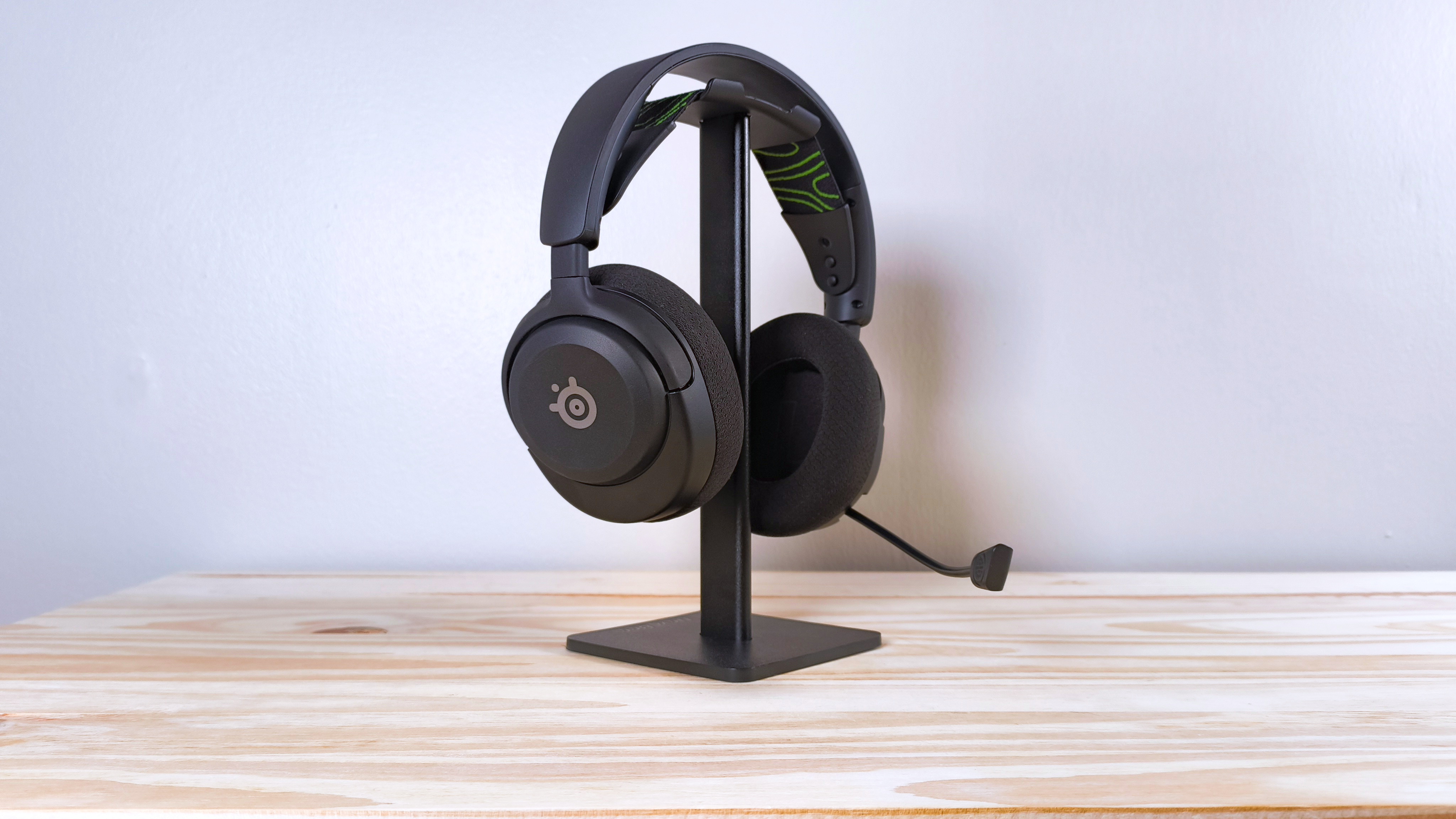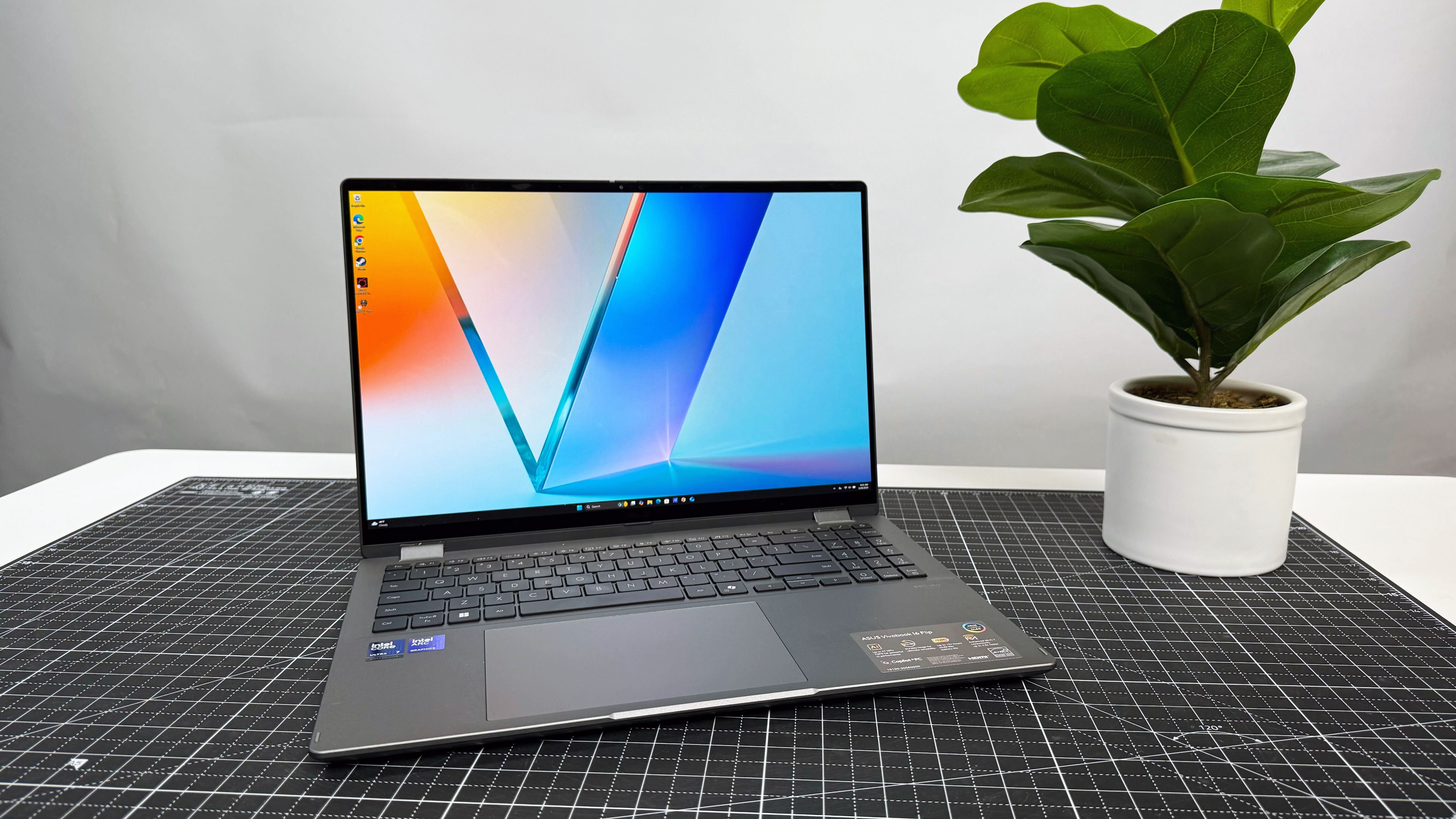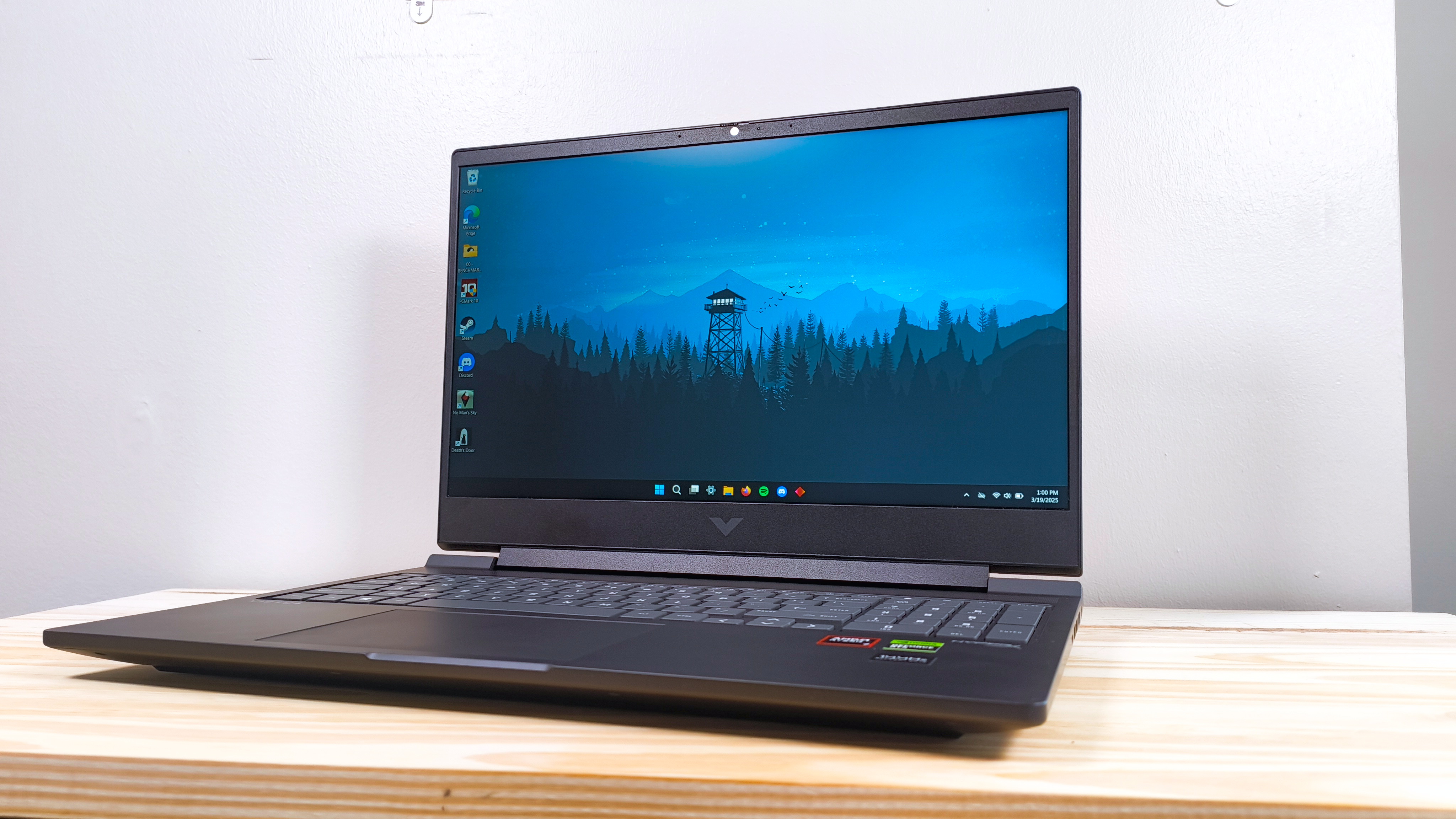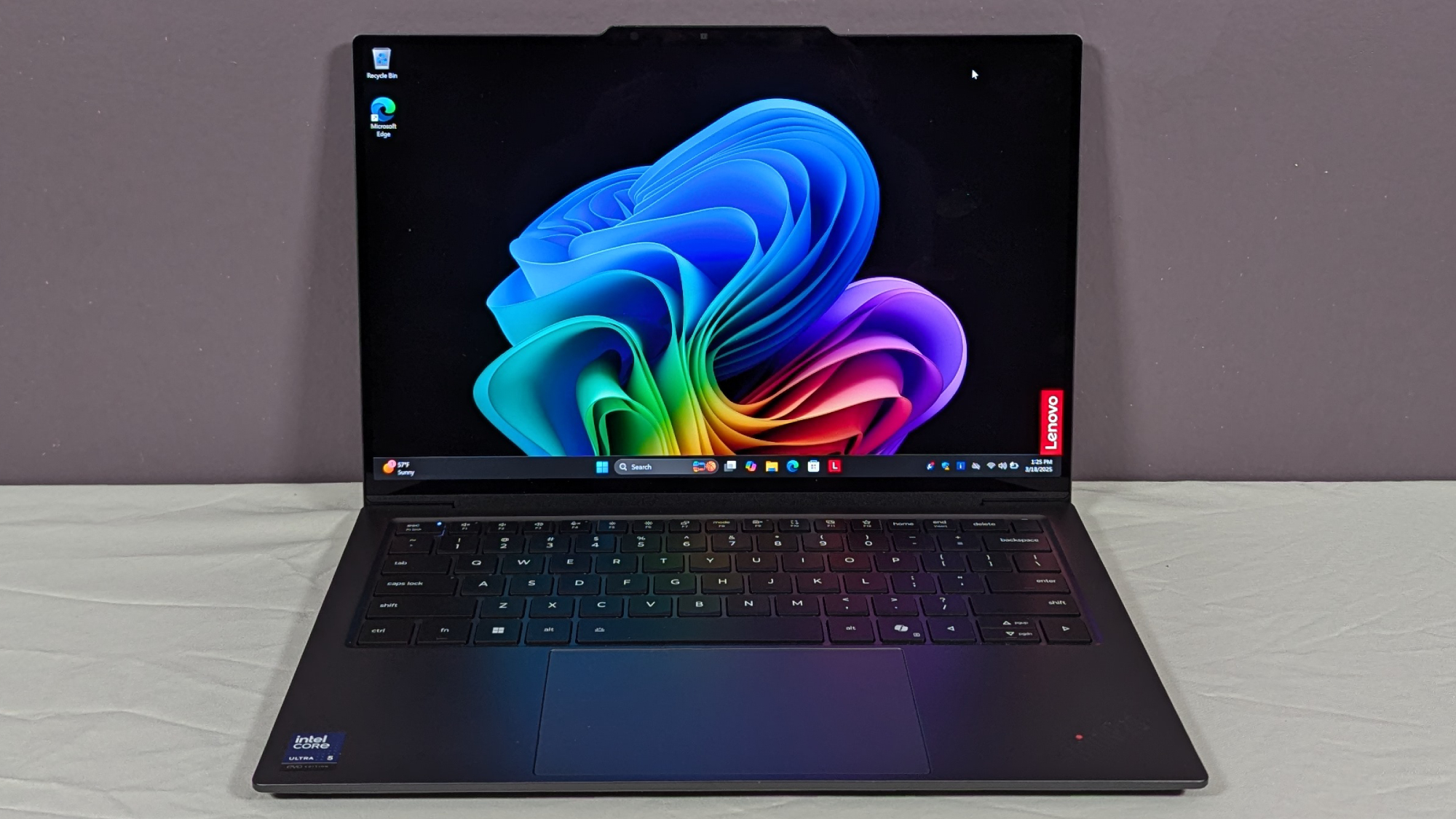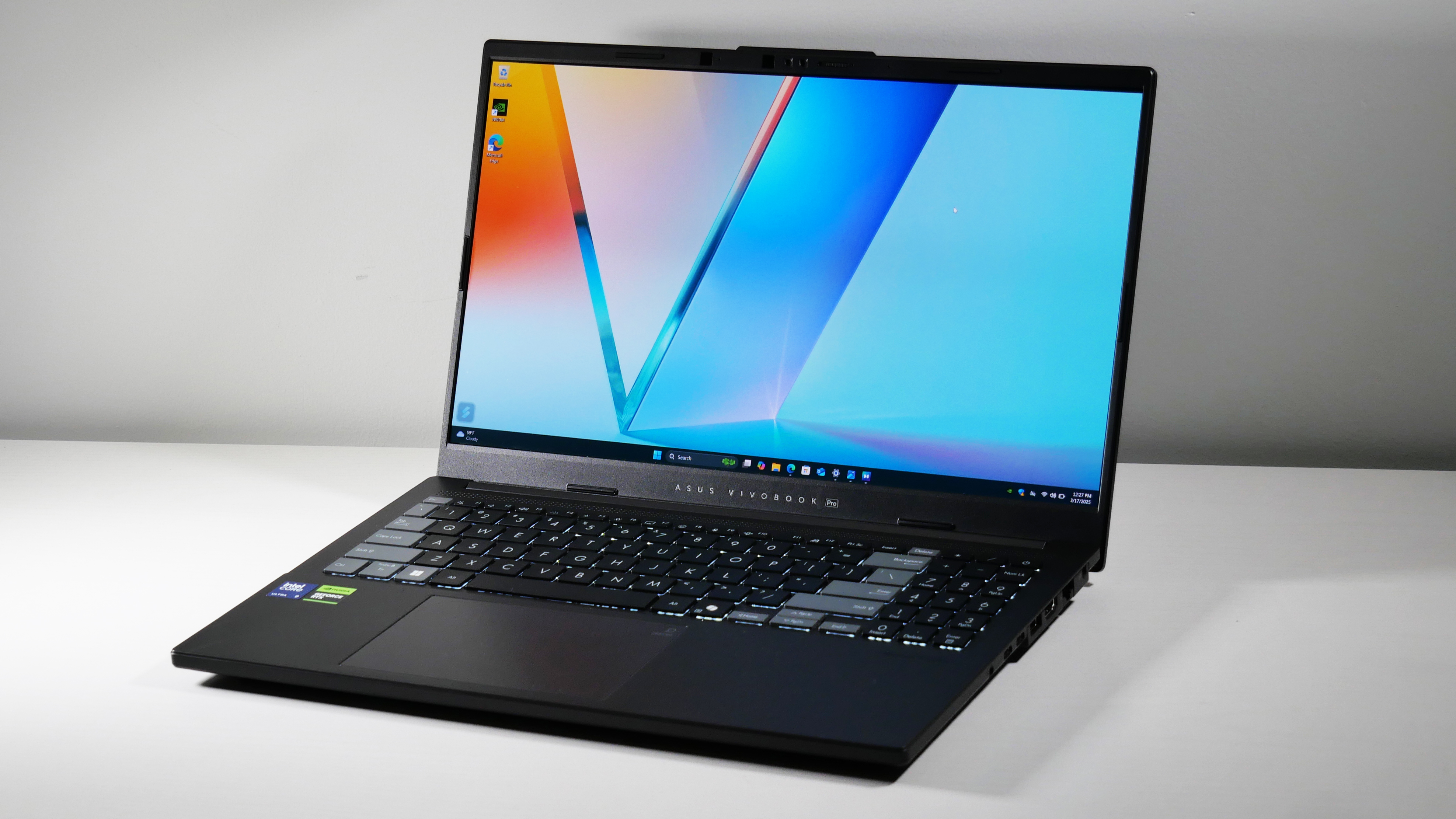Laptop Mag Verdict
Retaining the stealth-like design of its predecessor, the ASUS G73SW-A1 has more power under the hood than ever.
Pros
- +
Strong graphics performance
- +
Attractive stealth fighter design
- +
Wide viewing angles
- +
Cool temperatures
- +
Strong low-light webcam
Cons
- -
Stiff keyboard
- -
Undersized arrow keys
- -
Short battery life
Why you can trust Laptop Mag
With the look of a stealth fighter on the outside and the combined power of a 2nd Generation Core i7 and high-end Nvidia GTX 460M graphics under the hood, the ASUS G73SW really stands out in a crowd. But for the premium price of $1,784, mobile gamers demand more than just great performance and looks; they want something truly special. Does the 17.3-inch ASUS G73SW fit the bill?
Editor's Note: Portions of this review were adapted from our review of the ASUS G73Jw, an earlier model of the same system.
Design
The G73SW-A1 is identical to the G73Jw-A1 and G73Jh-A2 we reviewed previously. At 8.8 pounds and 16.6 x 12.8 x 2.3 inches, the G73JW-A1 would never be mistaken for an ultraportable, but compared to some other systems we've tested--such as the 10.6-pound, 18-inch Toshiba Qosmio X505--it seems rather svelte. Carrying it and its 2-pound power brick around in an oversize backpack was no problem, even when we had to stand for a long time on the bus.
Modeled after the F-117 Nighthawk stealth fighter, the G73AW-A1 lacks the bling of colorful notebooks such as the Alienware M17x, but its sleek, angular design and gunmetal-gray exterior make it one of the most attractive systems we've seen. The dual exhausts on the back combine with the subtle silver ASUS logo and the Republic of Gaming emblem to make this product look more like one of the planes you'd fly in a game than the notebook you'd be gaming on. Open up the lid, and the subtle theme continues inside. Only a few small buttons sit on top of the simple black keyboard, and the gray touchpad simply blends into the deck. No colorful status lights or bright red buttons here.
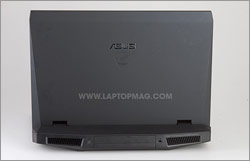
Click to enlargeWhat really makes the G73SW-A1 stand out is the rubberized material used on both the lid and deck. More notebooks should use this type of material, because it's incredibly comfortable to touch, resists finger prints, stays cool, and provides a feeling of durability and quality.
Heat
Few things are more irritating than a notebook that singes your wrists, lap, or fingers. Fortunately, the ASUS G73SW stays ice-cold at all times. After streaming a video for 15 minutes, we measured the touchpad at 80 degrees, the keyboard at 85 degrees, and the bottom at only 83 degrees. We consider temperatures below 95 degrees comfortable and those below 90 undetectable.
Keyboard and Touchpad
Unfortunately, the G73SW-A1's backlit keyboard is a huge drawback, with tiny stiff keys that are difficult for typists and gamers alike. On the Ten Thumbs Typing Test, we got one of our worst scores ever--68 words per minute and a 3-percent error rate as opposed to our average rate of 80 wpm and a 1-percent error rate.
One reason the keyboard is so difficult to touch type on is that the keys give really weak tactile feedback and require really hard and deliberate strokes. Another issue is that their flat, square shape lacks the kind of curves that make it easy to feel your way around the rows, and the narrow space between them seems smaller than on other devices.
Why ASUS decided to not use all available space for the keyboard remains a mystery. The chassis is 16 inches wide, but it has 1.5 inches of empty plastic on either side of the keyboard. Meanwhile, the arrow keys and numeric keypad--both essential for gameplay--are actually smaller than the rest of the keys, making it difficult to use them as controls. To make matters worse, the sharp incline and deep palm rest (more wasted space) can make it hard to keep your hands from slipping backward as you type.
Size-wise, the 4.4 x 2.2-inch touchpad has everything going for it: a large, smooth--but not too smooth--surface, multitouch gesture support, and two discrete buttons that offer just the right amount of tactile feedback. Unfortunately, the G73SW doesn't have a touchpad on/off button like those found on Toshiba's Qosmio series. Such buttons are helpful for gamers who use mice and want to avoid accidentally touching the trackpad while they use the keyboard.
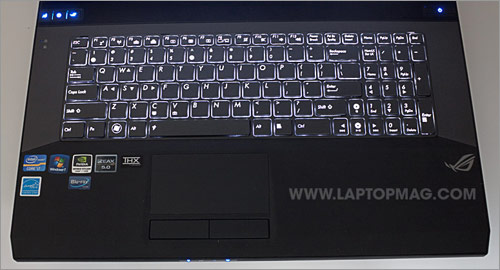
Click to enlarge
Display and Audio

Click to enlargeThe G73SW's 17.3-inch, 1920 x 1080 screen provided bright, sharp images and wide viewing angles. Images didn't wash out much, even at 90 degrees to the left or right. The system handled every kind of video we threw at it, from a 1080p QuickTime trailer of Sucker Punch to a 720p streaming Flash episode of Fringe. Though the screen colors aren't particularly vivid by default, you can change the color temperature between correction, gamma, normal, theater, and vivid modes. We like the rich, dark colors of theater mode best, particularly for video viewing.
The G73SW's speakers provided audio that was loud enough to fill a room and fairly accurate if not overly rich. Sound was true when listening to the bass-heavy jazz tune "Summer Madness" and the guitar-laden rock classic "All Along the Watch Tower," but it was difficult to sense any separation of instruments. Also, like the MSI GT680R, the speakers are too close to the screen, causing sound to reflect off it.
Playing with the settings in the included Realtek HD Audio manager, which includes presets for different types of music and different kinds of rooms, had no noticeable effect on audio quality. The G73SW also comes with THX TruStudio software and includes presets for built-in speakers, external speakers, and headphones, which helped somewhat.
Ports and Webcam
The G73SW-A1 has a lot of ports on its large frame. On the right side are an 8-in-1 card reader, HDMI-out, VGA-out, and two USB ports, one of which is USB 3.0. On the left side are an Ethernet port, audio in/out, and two more USB ports for a total of four. The only major ports the system lacks are ExpressCard and eSATA, but few people need those options these days.

Click to enlarge

Click to enlarge
The 2-megapixel webcam provided bright, sharp images with accurate colors even in our dark living room. When conducting a call on Skype, the smooth video was only constrained by our connection speed. Considering some of the poor quality cams we've seen on high-end systems, the ASUS G73SW's camera really stands out.
Performance
Powered a 2-GHz, quad-core 2nd Generation Intel Core i7-2630QM CPU, Nvidia GeForce GTX 460M graphics, and dual 500GB 7,200-rpm Seagate Hybrid hard drives, the ASUS G73SW packs plenty of power for intensive tasks such as gaming, HD media playback, and video editing. On PCMark Vantage, a benchmark that measures overall system prowess, the G73SW scored a strong 8,226, which is well above the desktop replacement category average of 6,399, the 6,358 offered by the earlier-generation G73Jw, and the 6,399 provided by the Dell XPS 17 3D. However, the Toshiba Qosmio X505-Q890, which has a 1.73-GHz Core i7 and an SSD, scored a much higher 10,392, and the $3,300 Alienware M17x with its 2.3-GHz Core i7-2820QM and SSD was more than twice as fast with a mark of 17,497.
The G73SW's two 500GB Seagate Momentus XT hard drives combine a standard 7,200-rpm rotating platter with 4GB of flash memory for caching frequently used apps and data. The first of these drives booted Windows 7 Home Premium (64-bit) in a modest 57 seconds--8 seconds faster than the category average, but nothing to write home about. It took a fast 2 minutes and 16 seconds to complete the LAPTOP File Transfer Test, which involves copying 4.97GB of mixed media files. That's a rate of 37.4 MBps, a bit above the 34.7 MBps category average and the 33.3 MBps offered by the ASUS G73Jw. However, the Alienware M17x's 99.8 MBps blew it away.
When it comes to video editing, the G73SW is no slouch, taking just 43 seconds to transcode a 114MB MP4 to AVI format in Oxelon media encoder. That's much faster than the 1:04 category average, the 1:50 provided by the Qosmio X505-Q890, and the 1:02 offered by the G73JW. Only the Alienware M17x did better, finishing in just 36 seconds.
The G73SW took only 1 minute and 25 seconds to transcode an HD video with Cyberlink Media Espresso, which is a lot faster than the 2:25 category average, the 1:52 offered by the Dell XPS 17, and even the 2:43 time turned in by the Alienware M17x.
Graphics and Gaming
With its Nvidia GeForce GTX 460M graphics and 1.5GB of video RAM, the ASUS G73SW is powerful enough to play even the most demanding games. On 3DMark Vantage, which measures overall graphics prowess, the notebook got a strong score of 8,272, well above the 6,726 category average, the 5,619 provided by the Qosmio X505-Q890, the 6,170 given by the Dell XPS, and the 7,438 that the original ASUS G73JW scored. The G73SW's GPU is also capable of outputting 3D content to a 3D-ready TV using the notebook's HDMI 1.4 port and Nvidia's 3D TV Play software.
When we played World of Warcraft at the system's native resolution of 1920 x 1080, the G73SW got an impressive rate of 155 frames per second. Even with all effects turned up, the notebook got a strong rate of 81 fps.
On more demanding games, the ASUS G73SW shone even brighter, providing an impressive frame rate of 143 fps at the 1024 x 768 resolution. Even better, the system managed an excellent 57 fps when we upped the resolution to 1920 x 1080, way stronger than the 31 fps category average, the Qosmio X505-Q890's 33 fps, and the Dell XPS 17's 41 fps, though less impressive than the Alienware M17x's 82 fps.
And the great rates didn't end there, as the ASUS G73SW got a whopping 68 fps when we played Call of Duty: Modern Warfare at 1920 x 1080 with all the effects turned up. It also got a strong 60 fps when we played Left 4 Dead at its highest settings.
Battery Life and Wi-Fi
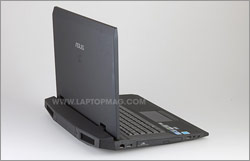
Click to enlargeDon't even think about using the ASUS G73SW unplugged for more than a few minutes. On the LAPTOP Battery test, which involves continuous surfing over Wi-Fi, the notebook lasted only 2 hours and 22 minutes, which is 10 minutes less than the desktop replacement category average, 29 minutes less than the Qosmio X505-Q890, and nearly 3 hours behind the Alienware M17x (5:02), which has the advantage of switchable graphics.
Configurations
Our G73SW review unit's configuration, which has the extended model name G73SW-A1, currently sells for $1,784. For that price you get the 2-GHz Core i7-2630QM CPU, 8GB of RAM, Nvidia GTX 460M graphics, and the dual 500GB Seagate Momentus XT hard drives. Though it was back-ordered as of this writing, Best Buy carries the same configuration under the model name G73SW-BST8 for just $1,499.
For $1,499 you can get the very similar ASUS G73SW-XT1, which has the same CPU, graphics, RAM, and Blu-ray player, but has only one 500GB hard drive. For $2,000 you can get the ASUS G73SW-3DE, which has the same configuration as the A1, but adds an Nvidia 3D Vision screen and glasses.
ExpressGate Instant-On OS
If you don't want to wait over a minute to boot into Windows 7, hit the ExpressGate instant boot button that sits in the upper left portion of the deck. That loads ASUS's ExpressGate Cloud instant-on OS in a little more than 15 seconds. ExpressGate Cloud is a version of the popular Splashtop instant-on OS that we've seen on dozens of computers from ASUS, HP, Lenovo, and others. With this version, you can browse the web, view photos in a photo gallery, or play a few simple games such as BlackJack and Klondike.
Software and Warranty
ASUS includes a few helpful utilities on the G73SW. Our favorite of these is ASUS Splendid, which changes the color temperature of the screen into gamma, soft, theater, or vivid correction modes. In addition, Roxio Cineplayer BD plays your Blu-ray discs. ASUS Power4Gear Hybrid allows you to tweak the power and performance settings by switching between battery-saving, entertainment, high-performance, or quiet modes. SmartLogon allows you to use facial recognition for logins.
ASUS bundles the G73Jw-A1 with a two-year warranty, 24/7 toll-free tech support, and a year of accidental damage protection. To see how ASUS fared on our latest Tech Support Showdown, click here.
Verdict
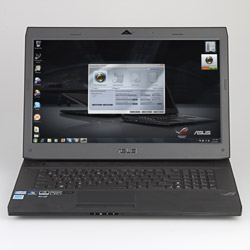
Click to enlargeThe ASUS G73SW-A1 offers a strong combination of blazing-fast graphics performance, superb media playback, and stylish looks. The system's biggest drawback by far is its painfully stiff keyboard, which can make typing and gaming less comfortable than they should be. If you're willing to purchase a heavier system with a larger screen and better keyboard, you might want to consider Toshiba's Qosmio X505 series, which is now adding Intel 2nd Gen processors to its line. And if you don't want to spare any expense, the $3,300 configuration of the Alienware M17x, which features a 2.3-GHz Core i7 and 256GB SSD, is the best gaming system on the market. However, if you're looking for great gaming performance in a gorgeous package, the G73SW should be near the top of your list.
ASUS G73SW-A1 Specs
| Bluetooth | Bluetooth 2.1+EDR |
| Brand | ASUS |
| CPU | 2-GHz Intel Core i7-2630QM |
| Card Slots | 8-1 card reader |
| Company Website | http://www.asus.com |
| Display Size | 17.3 |
| Graphics Card | Nvidia GeForce GTX 460M |
| Hard Drive Size | Dual 500GB |
| Hard Drive Speed | 7,200rpm |
| Hard Drive Type | Dual SATA Hard Drives |
| Native Resolution | 1920x1080 |
| Operating System | Windows 7 Home Premium (64-bit) |
| Optical Drive | BD-ROM/DVDRW DL |
| Optical Drive Speed | 8X |
| Ports (excluding USB) | Microphone, Headphone, HDMI, Ethernet, VGA, USB 3.0 |
| RAM | 8GB |
| RAM Upgradable to | 8GB |
| Size | 16.6 inches, 12.8 inches, 2.3 inches |
| Touchpad Size | 4 x 2.1 inches |
| USB Ports | 4 |
| Video Memory | 1.5GB |
| Warranty/Support | 1 Year Accidental Damage Warranty, 2 Year Standard Warranty |
| Weight | 8 pounds |
| Wi-Fi | 802.11 a/g/n |
| Wi-Fi Model | Atheros AR9285 |

